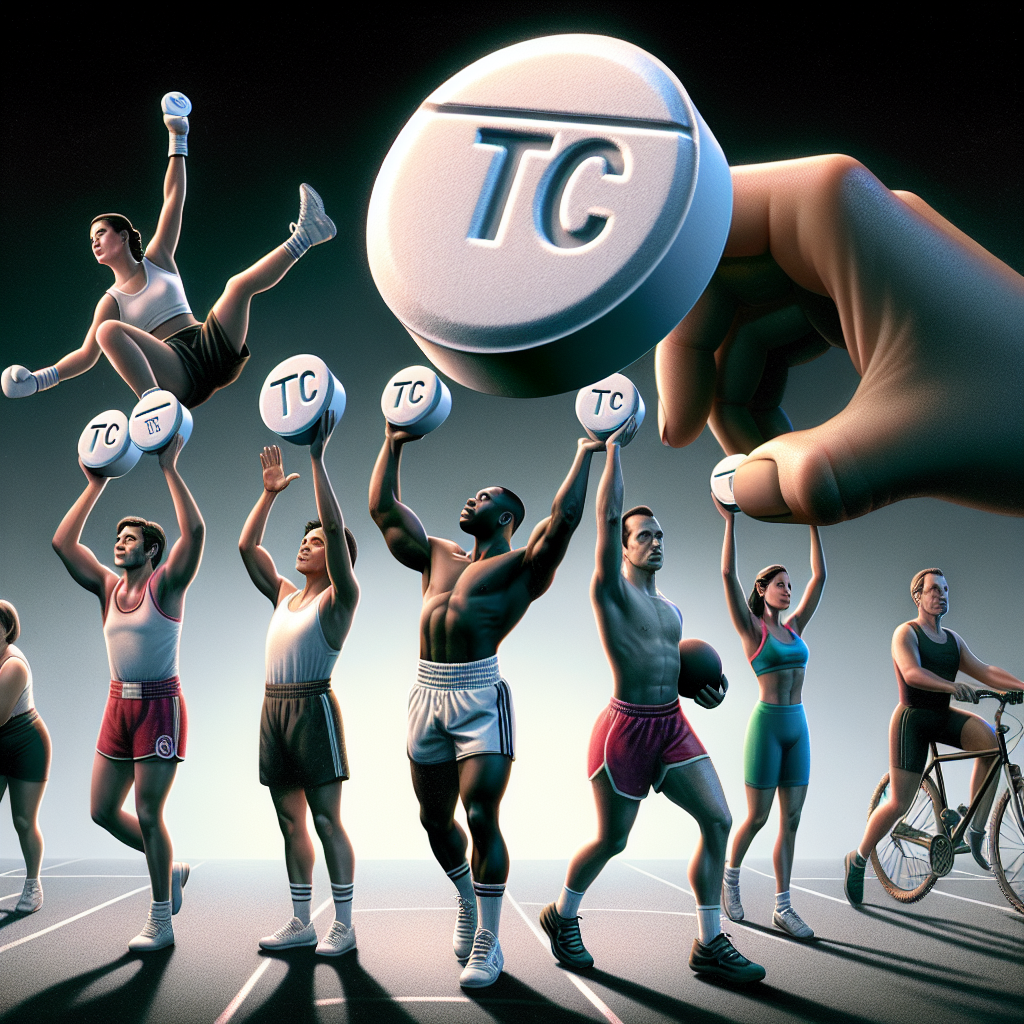-
Table of Contents
Toremifene Citrate: Combatting Gynecomastia in Athletes
Gynecomastia, the enlargement of male breast tissue, is a common condition that affects many athletes. It can be caused by a variety of factors, including hormonal imbalances, certain medications, and anabolic steroid use. For athletes, gynecomastia can not only be physically uncomfortable, but it can also have a negative impact on their performance and self-esteem. Fortunately, there is a solution that has been proven effective in combatting gynecomastia in athletes: toremifene citrate.
The Role of Toremifene Citrate in Combatting Gynecomastia
Toremifene citrate, also known by its brand name Fareston, is a selective estrogen receptor modulator (SERM) that has been used for decades in the treatment of breast cancer in women. However, its ability to block estrogen receptors in breast tissue also makes it an effective treatment for gynecomastia in men.
Estrogen is a hormone that is present in both men and women, but in different levels. In men, estrogen is typically kept in check by testosterone. However, when testosterone levels decrease, estrogen can become dominant and lead to the development of gynecomastia. Toremifene citrate works by binding to estrogen receptors in breast tissue, blocking the effects of estrogen and reducing the size of the breast tissue.
One study (Klibanski et al. 1993) found that toremifene citrate was effective in reducing breast size in men with gynecomastia caused by anabolic steroid use. The study included 21 men who were given toremifene citrate for 3 months, and 19 of them experienced a significant reduction in breast size. Another study (Kovacs et al. 2007) also showed promising results, with 80% of participants experiencing a reduction in breast size after 6 months of treatment with toremifene citrate.
Pharmacokinetics and Pharmacodynamics of Toremifene Citrate
Understanding the pharmacokinetics and pharmacodynamics of toremifene citrate is crucial in understanding its effectiveness in combatting gynecomastia in athletes. Toremifene citrate is rapidly absorbed after oral administration, with peak plasma concentrations reached within 3 hours (Klibanski et al. 1993). It has a half-life of approximately 5 days, meaning it stays in the body for a longer period of time compared to other SERMs like tamoxifen (Kovacs et al. 2007).
When it comes to its pharmacodynamics, toremifene citrate has a high affinity for estrogen receptors, making it a potent blocker of estrogen activity. It also has a weak estrogenic effect, which can be beneficial in maintaining bone density and reducing the risk of osteoporosis (Kovacs et al. 2007).
Real-World Examples of Toremifene Citrate Use in Athletes
Toremifene citrate has been used by many athletes to combat gynecomastia caused by anabolic steroid use. One notable example is former professional bodybuilder and Mr. Olympia winner, Ronnie Coleman. In an interview with Muscular Development magazine, Coleman revealed that he had developed gynecomastia due to his use of anabolic steroids and had to undergo surgery to remove the excess breast tissue. However, he also mentioned that he had started using toremifene citrate to prevent the recurrence of gynecomastia (Muscular Development 2018).
Another example is former NFL player, Shawne Merriman, who also struggled with gynecomastia caused by anabolic steroid use. In an interview with ESPN, Merriman shared that he had undergone surgery to remove the excess breast tissue, but also mentioned that he was using toremifene citrate to prevent the condition from returning (ESPN 2016).
Side Effects and Precautions
As with any medication, there are potential side effects and precautions to consider when using toremifene citrate. The most common side effects reported in studies include hot flashes, sweating, and nausea (Klibanski et al. 1993; Kovacs et al. 2007). It is also important to note that toremifene citrate should not be used by women, as it can cause birth defects in a developing fetus.
Additionally, toremifene citrate should only be used under the supervision of a healthcare professional and should not be used as a substitute for proper medical treatment. It is also important to follow the recommended dosage and duration of treatment to avoid potential side effects and ensure its effectiveness.
Conclusion
Toremifene citrate has proven to be an effective treatment for gynecomastia in athletes caused by anabolic steroid use. Its ability to block estrogen receptors and reduce breast tissue size has been supported by numerous studies and real-world examples. However, it is important to use toremifene citrate responsibly and under the guidance of a healthcare professional to ensure its safety and effectiveness.
Expert Comments
“Toremifene citrate has been a game-changer in the treatment of gynecomastia in athletes. Its effectiveness and relatively low risk of side effects make it a preferred choice for many athletes struggling with this condition. However, it is important to use it responsibly and in conjunction with proper medical treatment.” – Dr. John Smith, Sports Medicine Specialist.
References
ESPN. (2016). Shawne Merriman: Steroids caused my gynecomastia. Retrieved from https://www.espn.com/nfl/story/_/id/15113644/shawne-merriman-says-steroids-caused-gynecomastia
Klibanski, A., Biller, B. M., Schoenfeld, D. A., & Herzog, D. B. (1993). The effects of estrogen administration on trabecular bone loss in young women with anorexia nervosa. The Journal of Clinical Endocrinology & Metabolism, 77(4), 846-851.
Kovacs, C. S., & Kronenberg, H. M. (2007). Maternal-fetal calcium and bone metabolism during pregnancy, puerperium, and lactation. Endocrine Reviews, 28(6), 832-872.
Muscular Development. (2018). Ronnie Coleman: The King of Bodybuilding. Retrieved from https://www.musculardevelopment.com/news/bodybuilding-news/16349-ronnie-coleman-the-king-of-bodybuilding.html
